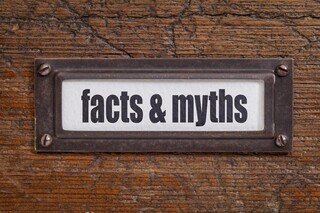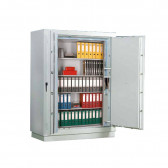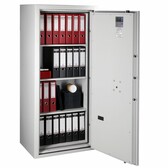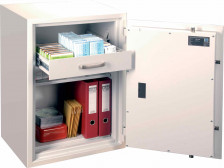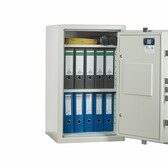Think you don't need a safe because it's a cash box reserved only for millionaires? Nothing could be further from the truth. Various models of safes are already available on the market, designed to store various contents.
The film industry is largely responsible for this misconception. In their productions, you usually see safes hidden in walls behind paintings or vaults reserved for the largest banks in the world. In reality, safes are much more accessible today thanks to a wide selection from many price ranges. It is therefore worth dispelling the biggest myths about safes.
1. Safes are only used for holding cash and jewellery
You can store basically every valuable thing in them. The most popular models protect, among other things, important documents, securities, valuable family heirlooms, jewellery and watches, works of art and data carriers. The choice of models matching their class and burglary resistance is almost unlimited.
There are many possible ways of hiding a safe and these depend primarily on its type, size and where it is installed. It is not always possible to install a safe in the wall or the floor due to the limited thickness and strength of ceilings. Instead, it is often installed in furniture such as a desk or a wardrobe.
3. A safe only protects against theft
In many cases customers are more concerned with fire resistance than with high burglary resistance. This is particularly true for safes in which valuable family heirlooms, important documents, legal documents or data carriers are stored.
4. If the safe is light but anchored to the floor, it cannot be lifted out.
A lightweight safe is much easier to lift off the ground than a heavy, solid safe, which often provides better protection against theft than a lighter but anchored model.
Burglaries are on the rise in Poland and thieves rarely attack random properties. They usually observe their target for a long time and plan their theft carefully. It takes them no more than a few minutes to find and remove the valuables.
6. I don't have any cash or expensive jewellery at home, so I'm not at risk of being robbed
Thieves do not always steal only valuables. Sometimes they value more, for example, data carriers on which they find confidential information, documents or souvenirs. In this case the loot is often used for later blackmail and extortion.
7. A safe is always a metal box
Safes from exclusive lines, e.g. Signature Safes, are designed by designers and in no way resemble black boxes disfiguring the interior. The casing can be painted in any colour, in precious materials or in wood. The interior also adapts to the individual tastes and style of the owner.
8. My house is secured by an alarm, so I don't need a safe
An alarm is just one of the methods that help to protect a property from a potential robbery. Unfortunately, it does not protect against damage or theft of property during a break-in. So it's best to invest in both a safe and an alarm to keep your home safe. It is best to combine these two safeguards into one coherent system, which is possible after equipping the safe with appropriate sensors that will trigger the alarm, for example in case of breaking the anchor or a shock.
9. The safe is secured only with a combination
Nowadays safes are equipped with sophisticated locking systems. Both key locks, electronic PIN locks, electronic card locks, mechanical combination locks and biometric locks are used. In turn, the best solution is to use combination locks. Security is also increased by additional safeguards such as a duress code, which can be used in the event of an attack. It opens the safe and at the same time silently notifies the relevant authorities of the intrusion.
Read also: Which lock to choose for safes?
10. Cheap safes are just as good as expensive ones
When choosing a safe for home, you should not be guided only by the price. You should first of all pay attention to the burglary protection class of the safe and its fire resistance. The higher the planned value of the items that you want to deposit in the safe, the higher security class you need to choose (refer to the article on calculation units). It is also worth noting who and on the basis of which standard issued the certificate. If we are looking for a solid anti-burglary safe, we should pay attention to whether the certificate was issued on the basis of the Polish standard PN-EN 1143-1. On the other hand, if we place the main emphasis on the protection against fire of the items stored in it, we should check whether the safe has a certificate issued on the basis of the Polish standard PN-EN 1047-1. Of course, there are safes which combine both functions described above, which we have already written about in another article. The author of the certificate will also be important. One of the most recognised institutes in Europe and worldwide is the German Association of Property Damage Insurers (VdS Schadenverhütung GmbH).
Check: burglarproof safes at Hartmann Tresore
You may be interested in: Is it worth buying a safe from a supermarket?
